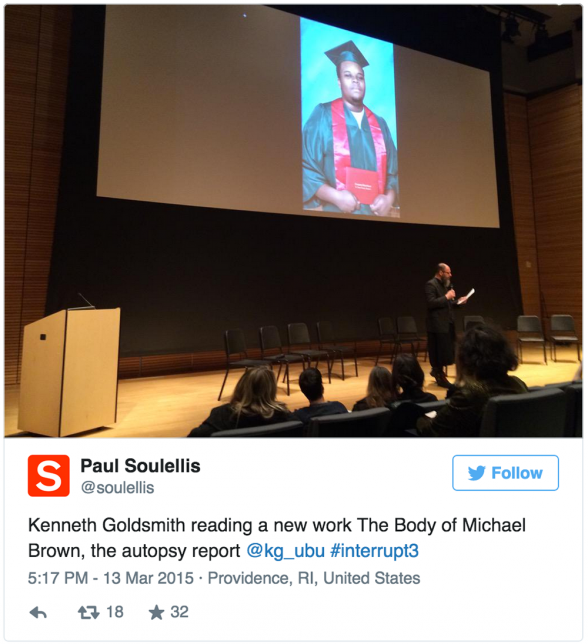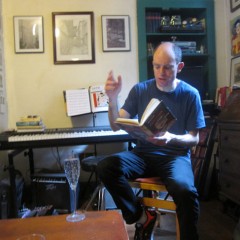[This weekend on the Artblog Reader Advisor: Tone-deaf “boundary pushing,” the definition of conceptual poet versus conceptual artist, and how white privilege makes it easy to appropriate and overshadow valuable social and artistic concepts. — the Artblog editors]
In case you missed it, there is an enormous conversation going on in the poetry community involving recent projects by artists Kenny Goldsmith and Vanessa Place. For Goldsmith, it was the near-verbatim reading of Michael Brown’s autopsy report at a recent performance, and for Place, it is the republishing, one tweet at a time, of Gone with the Wind on her Twitter account. Both poets are known for pushing boundaries, but these latest projects have sparked contemptuous and well-deserved backlash from groups and individuals, citing the methods of two white artists invoking/provoking black bodies in the supposed spirit of racial dialogue.
Of note in this story is Goldsmith’s and Place’s oft-cited position as “conceptual poets”. Often, however, both artists’ performative and new media approaches feel just as home in the visual arts as in the discourse of poetry. In my view, the difference between a “conceptual poet” and a “conceptual artist” is almost negligible. (The same goes for contemporary or conceptual dancers, musicians, authors, organizers, etc.) So far, this conversation has been contained to the poetry community, but the relevance and import to the visual arts is glaring–like, elephant-in-the-room glaring. Indeed, if you read through these essays and replace “conceptual poetry” with “conceptual art,” or at this point, “visual art at large,” the arguments put forth take on striking new relevance.

Not that the visual art world is unfamiliar with the controversy of white artists appropriating bodies of “others”. Recall Joe Scanlan’s abhorrent presentation of “Donelle Woolford” at the 2014 Whitney Biennial, and in extension, Richard Prince’s recent exploitative use of reproduced Instagram images–many of which were taken by and depict young and female users. In the cases of Goldsmith, Place, Scanlan, Prince, and a wave of others, the underlying theme being drawn out most clearly in the poetry community is the connection between conceptualism and the white privilege/supremacy that often supports, condones, and perpetuates such practices.
Last, drawing one of the most recent and interesting contexts to this conversation is a panel hosted by the Hammer Museum addressing how tactics of conceptualism have been used by black artists. Definitely worth the long watch.









